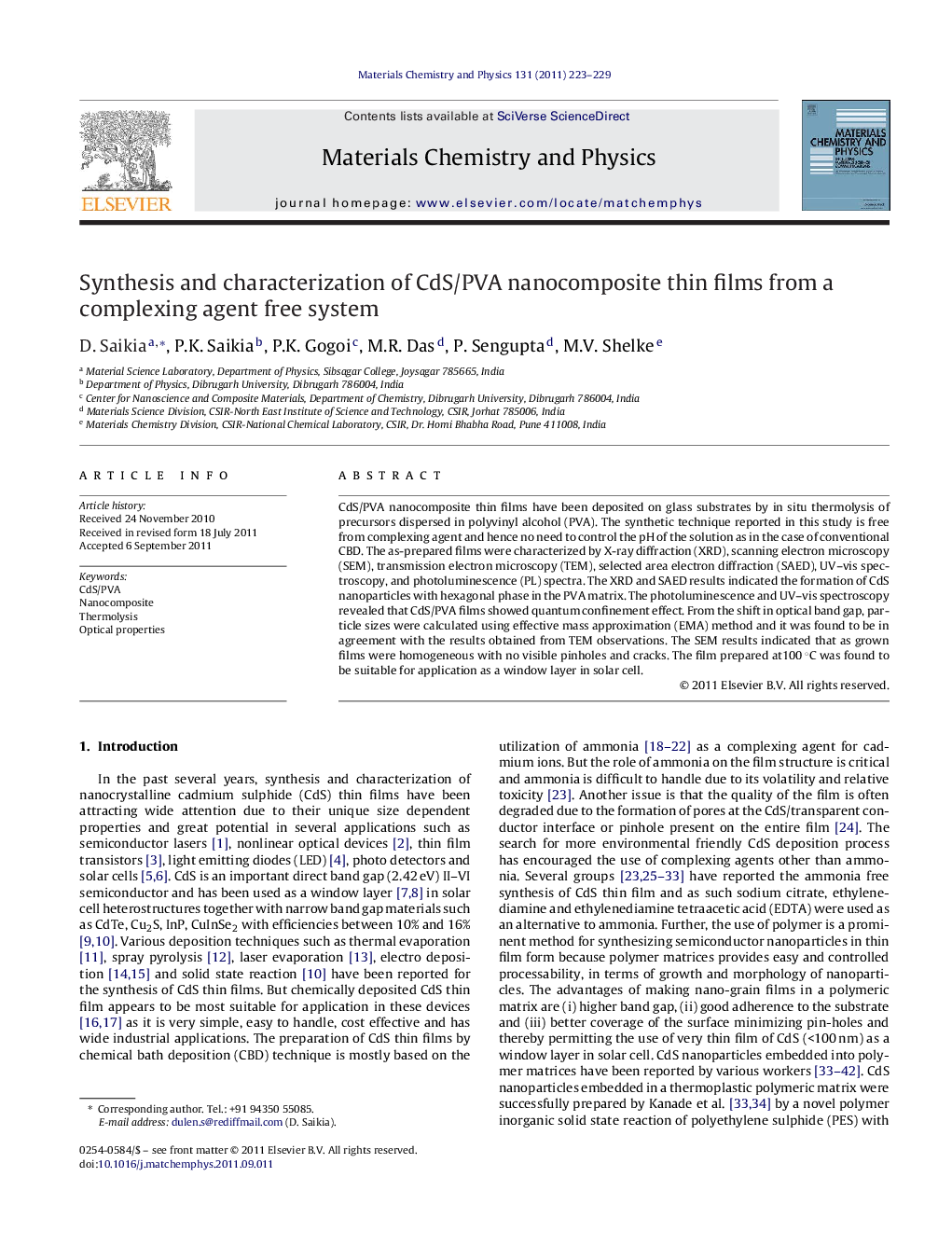| کد مقاله | کد نشریه | سال انتشار | مقاله انگلیسی | نسخه تمام متن |
|---|---|---|---|---|
| 1523915 | 1511829 | 2011 | 7 صفحه PDF | دانلود رایگان |

CdS/PVA nanocomposite thin films have been deposited on glass substrates by in situ thermolysis of precursors dispersed in polyvinyl alcohol (PVA). The synthetic technique reported in this study is free from complexing agent and hence no need to control the pH of the solution as in the case of conventional CBD. The as-prepared films were characterized by X-ray diffraction (XRD), scanning electron microscopy (SEM), transmission electron microscopy (TEM), selected area electron diffraction (SAED), UV–vis spectroscopy, and photoluminescence (PL) spectra. The XRD and SAED results indicated the formation of CdS nanoparticles with hexagonal phase in the PVA matrix. The photoluminescence and UV–vis spectroscopy revealed that CdS/PVA films showed quantum confinement effect. From the shift in optical band gap, particle sizes were calculated using effective mass approximation (EMA) method and it was found to be in agreement with the results obtained from TEM observations. The SEM results indicated that as grown films were homogeneous with no visible pinholes and cracks. The film prepared at100 °C was found to be suitable for application as a window layer in solar cell.
► Polymer–CdS nanocomposite thin films have been synthesized by in situ thermolysis of the precursors confined in polymer matrix.
► Thesynthetic method is free from complexing agent.
► The film was prepared within a short period (10–60 min) compared to conventionalCBD method, which takes longer time.
► Our method can yield pinhole free, homogeneous and transparent films very well adhered to thesubstrate.
► The film is suitable for application as a window layer in solar cell.
Journal: Materials Chemistry and Physics - Volume 131, Issues 1–2, 15 December 2011, Pages 223–229